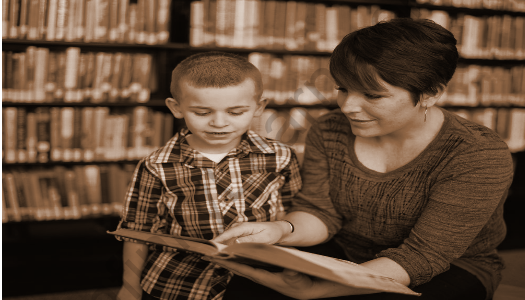Table of Contents

Every effective communicator must master the skill of asking questions. Simply said, mastering the art of asking questions can help you communicate more effectively and ensure that you are understood whether you are speaking or listening. This necessitates knowing when and how to ask the appropriate questions. For example, you can check if others are listening and understanding what you’re saying by asking the correct questions while you’re speaking. By asking while you are listening, you will ensure that you have fully comprehended what the speaker is saying and will demonstrate to the speaker that you are paying attention to what they are saying. Without going into detail, questions are an important component of any discourse and should not be avoided.
neglected. Misunderstanding and misinterpretation can result from the omission of questions whether we’re teaching, making research presentations, interviewing, or mentoring, we get asked a lot of questions in academia. This is exciting, but it may also be frightening. While questions can be intimidating, we believe that inviting them throughout our teaching and presentations will allow us to improve the teaching and learning environment. It’s crucial to remember that our experiences as teachers and presenters influence our audiences’ experiences, so when we’re more engaged, our audiences are more interested and learn better. Our teaching personalities can also help us increase engagement in our classes and presentations. By bringing PEACE to our lessons through our Preparation, Expertise, Authenticity, Caring, and Engagement
The five basic techniques to increase our involvement as teachers and presenters, which will improve our and our audience’s experience with answering questions, are outlined below.
☆Have a smile while answering
When responding to questions. It is natural to feel both anxious and enthusiastic when asked a question. We begin by smiling to assist manage worry and reframe our emotional experience as one of excitement. The grin isn’t really for the audience (though it might help us connect with them), but it does help us relax, experience more happy emotions, and have a more positive perspective on the question-and-answer conversation. Even if the individual asking the question cannot see us, we recommend smiling for the benefits that smiling gives (e.g., answering questions remotely). Then we inhale deeply. Breathing assists us to better control our emotions and gives a pause before responding to the inquiry. We consider the solution to our inquiry during this interval. We finally speak and relay our response after more calmly considering it.
☆Pay close attention.
Pay attention to the very end. Resist the urge to begin constructing an answer as soon as the individual begins to ask the inquiry.To receive what is being stated, clear your mind of all thoughts. Allow your speculations to fade away, and try to remain completely focused on the person who is asking the question. Focusing on the question rather than your response will lead to a more meaningful response.
☆Be conscious of how you present yourself.
Body language is important while answering inquiries. We can improve everyone’s experience by being more aware of our own body language. Making eye contact with the person who asked the question, turning our body toward them (“offering them our shoulders”), taking a little stride toward them, and/or smiling, for example, can show the questioner that we are paying attention and respecting their question. We can indicate our discomfort with the question by breaking eye contact, crossing our arms, turning or walking away, and/or frowning. Our body language can communicate to our audience (and to ourselves!) that we are at ease being asked questions and responding to them. While a more natural response is often body language.
☆Utilise a framework
Having a structure or template in mind for your impromptu replies in response to a question is the easiest way to go. Templates are simple to recall. Then it’s only a matter of rapidly fitting your points into the suitable structure. Here are some structures to assist you:
☆Say “I’m not sure” in a useful way.
When asked questions while teaching or presenting, we are often concerned with not knowing the answers and looking like we do not know the content we are teaching or presenting. when asked an issue we don’t know the solution to is to brainstorm and crowdsource the solution with our audience. For instance, in class, we may discuss the way to find the solution, like by using library resources to the research literature or by designing the research study to seek out the solution. These tactics enable our students to think critically about course content or research subjects, as well as to apply course- or research-relevant methods to knowledge acquisition.
Even if we don’t have the answers to the questions that were asked, we can demonstrate our respect for their inquiries, as well as our expertise and thoughtfulness, to generate opportunities to build connections and community with our audience.
Answering questions is a fantastic experience for both our audience and us. While questions might be frightening and cause anxiety, we should invite and encourage them when we educate and present.
These five tactics will boost our and our audience’s engagement, as well as make answering queries a more enjoyable experience for both of us.
FAQ’s
Q. How do you improve your question-answering skills?
Ans: Here are some actions you may take to effectively and constructively reply to challenging questions:
- Prepare yourself for a barrage of difficult questions…
- Before you answer, take a flash to think…
- Keep an eye on your body language…
- Rephrase your question…
- If you need additional time, do so.
Q. How can you hone your interrogation skills?
Ans: Question Types: Open-ended vs. Closed
Don’t Interrupt…. Don’t Ask Just to Ask…. Use Silence… Ask Confidently.
What are the five different types of teaching methods?
Teaching Methods for the 5 Families Teaching strategies are used to establish learning environments and to help students achieve set learning goals.









